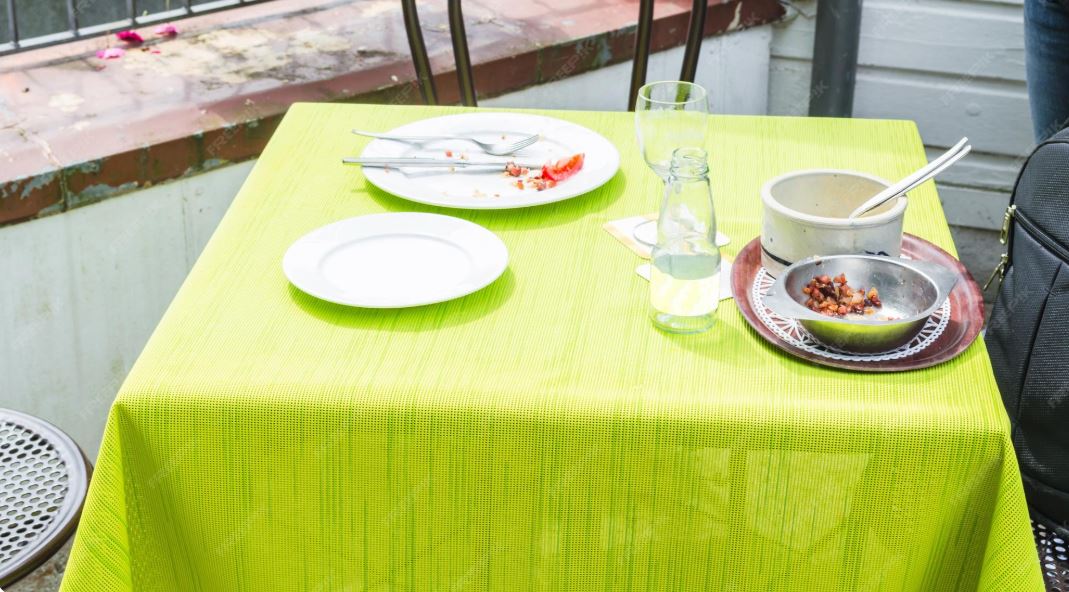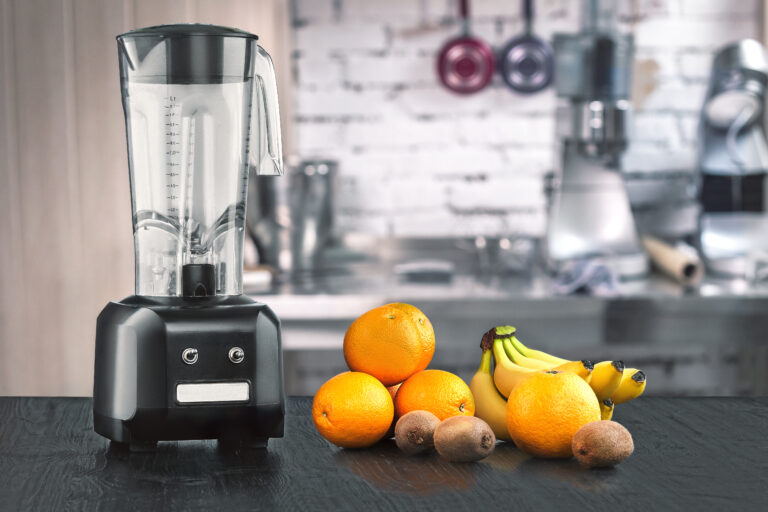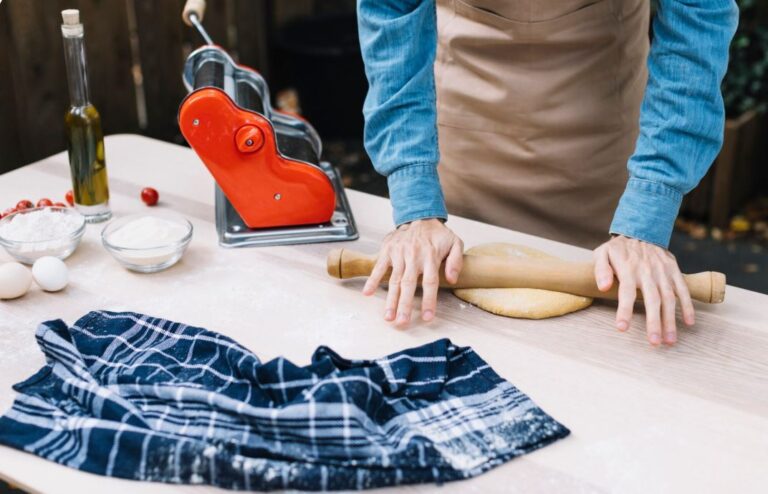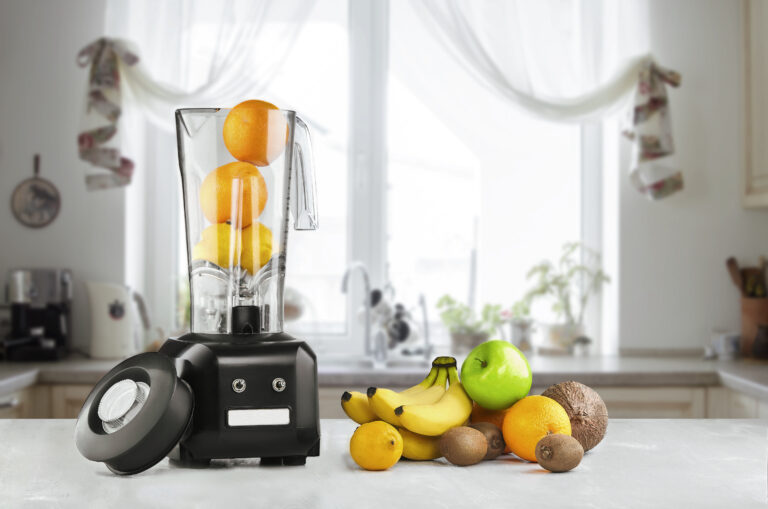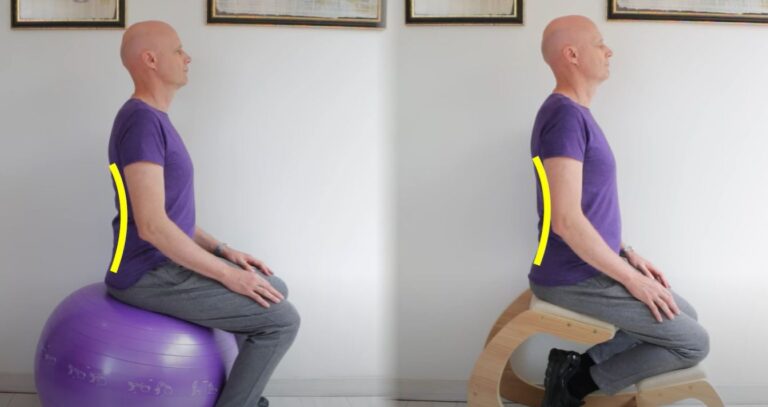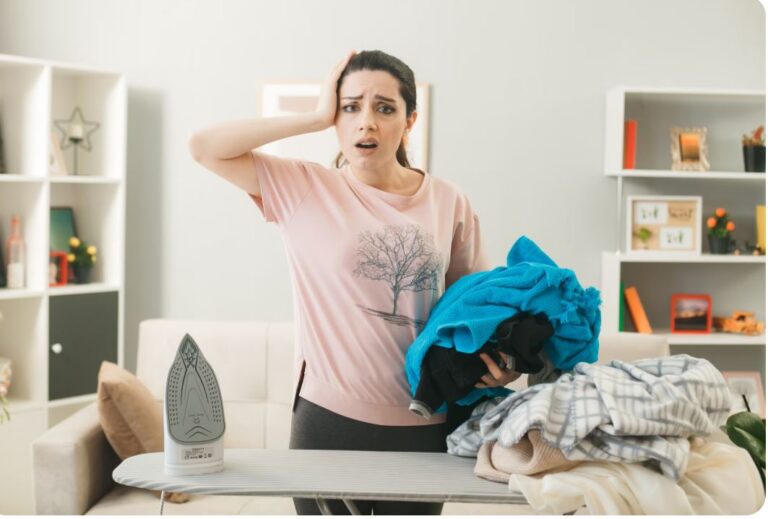A well-chosen tablecloth is far more than just a piece of fabric for your dining table; it is a fundamental element of both home decor and furniture protection. For a beautiful wood table, which can be a significant investment, a tablecloth serves as an essential first line of defense against the inevitable spills, scratches, and heat damage of daily life. At the same time, it is a powerful tool for setting the mood for any meal, instantly transforming a space from casual to elegant or from everyday to festive.
In a market filled with countless options, understanding the characteristics of different materials is key to making the right choice. This guide delves into the two most timeless and beloved fabric choices for tablecloths cotton and linen and provides a detailed look at our top picks for 2025, balancing quality, durability, and style to help you find the perfect match for your home.
Top Picks for 2025
After extensive research and testing, we have identified two tablecloths that stand out in a crowded market. Our top pick offers a perfect blend of quality and value, while our upgrade choice is a worthwhile investment for those who appreciate premium, heirloom-quality textiles.
Williams Sonoma Hotel Tablecloth (Best Overall)

The Williams Sonoma Hotel Tablecloth has been a long-standing favorite for a reason. It perfectly embodies the elegance and simplicity of a classic fine-dining establishment, bringing a polished and timeless look to any table. Its blend of high-quality material and thoughtful construction makes it the best choice for a wide range of uses, from daily meals to formal gatherings.
Material: 100% tight-weave cotton
This tablecloth is crafted from thick, high-quality, 100% cotton with a tight percale weave. This specific construction gives the fabric its smooth, crisp feel and durability, allowing it to withstand repeated washes without losing its shape or integrity. The tight weave also makes it more resistant to light stains, as liquids are less likely to penetrate the fibers immediately.
Available sizes and colors
One of the greatest strengths of the Williams Sonoma Hotel Tablecloth is its availability in a variety of sizes and shapes to fit almost any dining table. It comes in a range of rectangular sizes (e.g., 70×90 inches, 70×126 inches), a square option (70×70 inches), and a 90-inch round version. This versatility is a major advantage for homeowners with uniquely shaped tables. The color palette is timeless and practical, typically including classic white, ivory, and other neutral shades that can complement any decor.
The tablecloth’s high-quality construction is evident in its details. The tight weave gives it a handsome, structured drape that falls cleanly from the table’s edge, giving a seamless and elegant look. The rectangular cloths are finished with deep hems (often 1 inch or more) and mitered corners, which add weight and ensure a polished drop. These features are hallmarks of a well-made product designed for longevity.
- Pros:
- Excellent Quality for the Price: Offers a premium, high-end feel at a reasonable price point.
- Durable: Holds up beautifully to repeated washing and frequent use.
- Classic and Elegant: Its crisp, structured look is perfect for both formal and casual settings.
- Versatile: Available in a wide range of sizes and colors to fit many tables and decor styles.
- Drawbacks:
- Prone to Wrinkling: As with all 100% cotton fabrics, it will wrinkle after being washed and dried, requiring ironing for a crisp, polished look.
- Lacks the Softness of Linen: It has a crisp feel, which some may prefer, but it doesn’t offer the same soft, relaxed drape as a pure linen tablecloth.
Rough Linen Smooth Linen Tablecloth (Upgrade Choice)
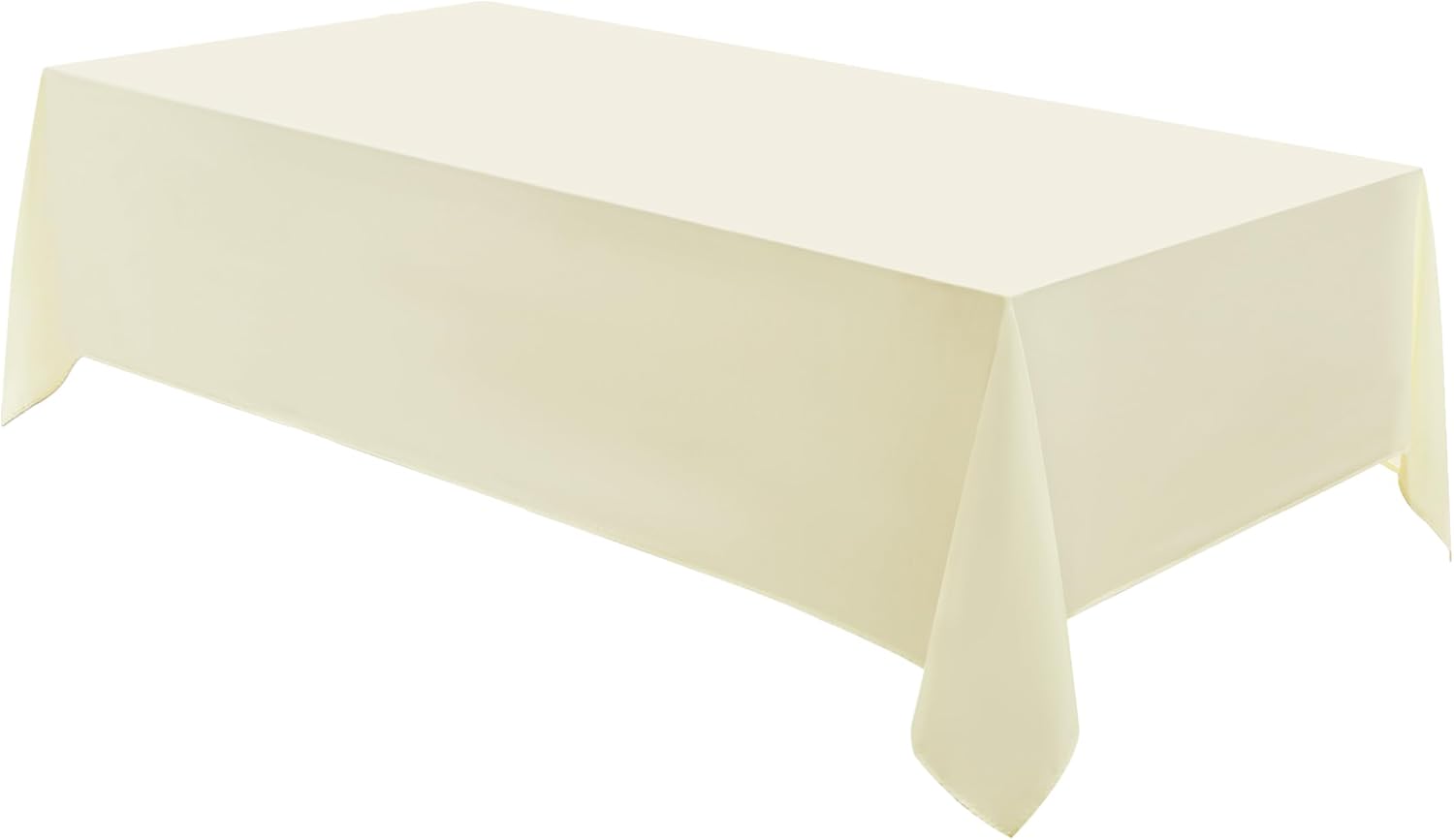
For those who view their table linens as a long-term investment and appreciate the unique qualities of linen, the Rough Linen Smooth Linen Tablecloth is an unparalleled choice. It combines rustic charm with luxurious quality, offering a beautiful tablecloth that only gets better with age.
Material: 100% Belgian linen
This tablecloth is made from 100% Belgian linen, widely regarded as the highest quality linen in the world. The threads spun from the flax plant are naturally thicker than cotton, giving the fabric its distinct, visible woven texture. This material is highly absorbent, durable, and naturally soft, and it becomes even softer and more supple with every wash.
Design and drape quality
The Rough Linen tablecloth is known for its beautiful, relaxed drape that gives any table a lived-in, effortless elegance. It has just enough weight to fall gracefully, without the stiffness of cotton. Its slightly rumpled appearance is part of its charm, making it equally suitable for a formal dinner as it is for a casual family meal. The visible weave adds a rich texture that brings a warm, organic feel to the tablescape.
Sizes and color options
The company offers a selection of sizes, including a 60-inch square, as well as a range of large rectangular sizes to accommodate longer tables. The color palette is often inspired by nature, featuring a variety of neutral, earthy tones that are timeless and versatile. While the selection might not be as broad as some mass-market options, the available colors are carefully chosen to complement a wide range of decors.
- Strengths:
- Heirloom-Quality: This is a tablecloth that can last for decades, becoming softer and more beautiful with time.
- Natural Elegance: The relaxed drape and visible texture give it a unique charm that is both casual and luxurious.
- Incredibly Durable: Linen is one of the strongest natural fibers, making this a very durable choice for everyday use.
- Low-Maintenance: It looks great even when slightly wrinkled, making ironing optional depending on the desired look.
- Weaknesses:
- High Price Point: This is a significant investment, as pure Belgian linen is much more expensive than cotton.
- Less Structured: The relaxed drape may not be ideal for those who prefer the crisp, perfectly pressed look of a cotton tablecloth.
Other Tablecloth Options Worth Considering

While our top picks, the Williams Sonoma Hotel Tablecloth and the Rough Linen Smooth Linen Tablecloth, represent the best in their respective categories, our extensive review process involved evaluating numerous other brands and products. A complete guide wouldn’t be possible without discussing the alternatives that fell short and explaining why they didn’t make the final cut. Understanding the flaws of these tablecloths can help you make a more informed decision and avoid common pitfalls when shopping for table linens.
Loom & Table Premium Cotton Tablecloth
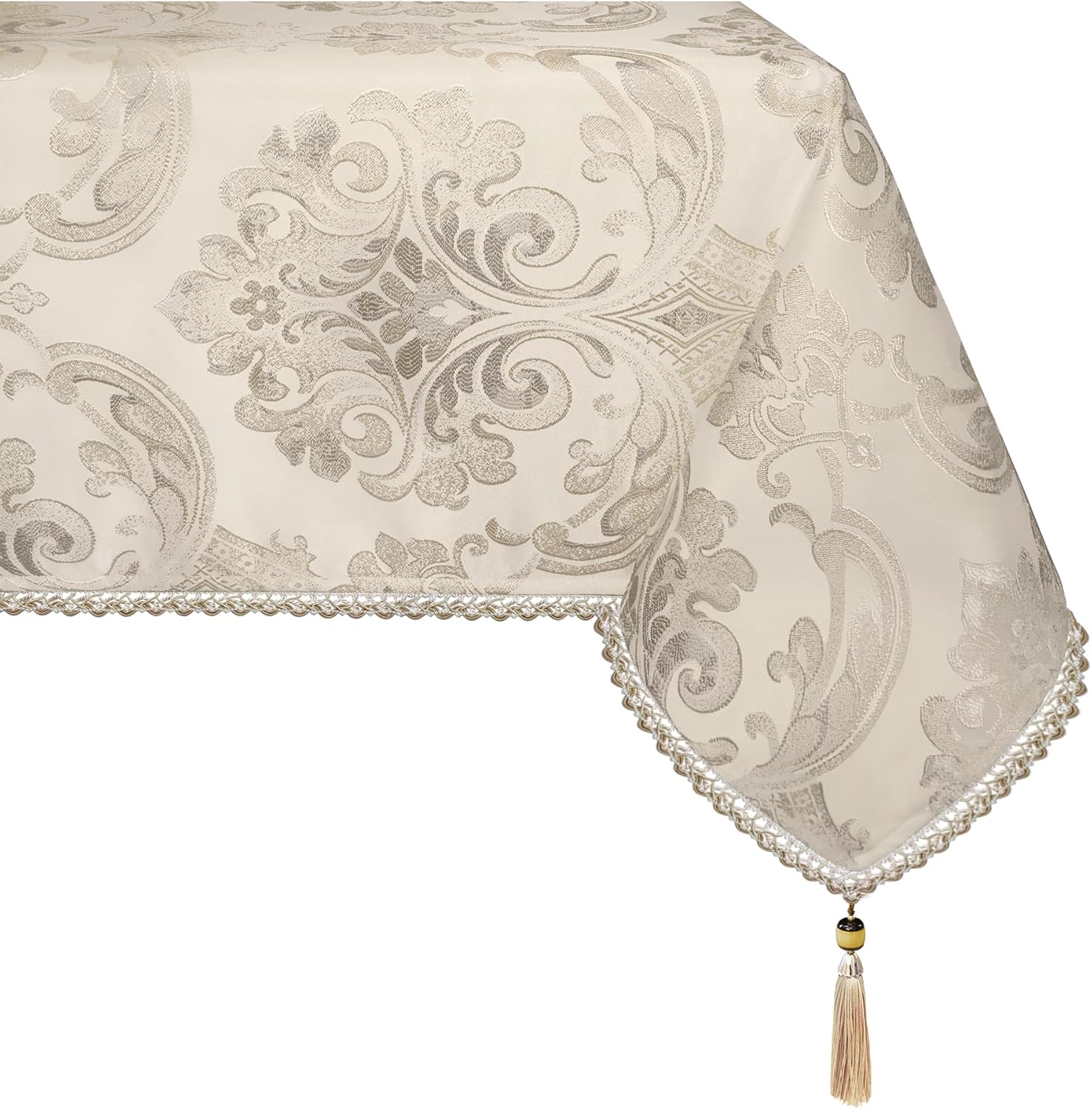
Loom & Table markets itself as a provider of custom-sized, premium table linens at an accessible price point, which is an appealing proposition for consumers with uniquely shaped or oversized tables. However, despite their marketing claims, our evaluation and customer feedback from late 2024 and early 2025 revealed significant quality issues.
Pros:
- Custom Sizing: The brand’s main selling point is the ability to order a tablecloth that perfectly fits your specific table dimensions, a feature that is hard to find in the mass market.
- Affordable: The pricing seems reasonable for a custom product, offering an alternative to standard-sized options.
Cons:
- Inconsistent Quality: Many reports from the last year mention crooked and flimsy stitching, which compromises the aesthetic and durability of the tablecloth.
- Misleading Material: While advertised as 100% cotton, the tablecloth is often a cotton-polyester blend. This changes the fabric’s feel and makes it prone to attracting lint.
Crate & Barrel Marin Linen Tablecloth
For those who are drawn to the relaxed, organic elegance of linen but are not ready to commit to the significant investment required for a top-tier option like the Rough Linen tablecloth, the Crate & Barrel Marin Linen Tablecloth seems like a compelling, more affordable alternative. It is made from European linen and features classic mitered corners. However, its lower price comes with some notable trade-offs in quality.
Pros:
- Affordable Linen: This tablecloth is a budget-friendly way to get the linen look without a major financial commitment.
- Timeless Style: Its simple, natural aesthetic is on-trend and can easily complement a variety of dinnerware styles.
Cons:
- Thin and Semi-Transparent: The primary drawback is the fabric’s quality. Unlike premium linen, this tablecloth is thin and semi-transparent, offering less protection for your table and a less luxurious feel.
- Stiff Fabric: It lacks the buttery softness of higher-end linen, feeling noticeably stiffer and less supple.
KAF Home Cotton Tablecloths
KAF Home specializes in affordable, basic home linens. Their tablecloths are widely available and represent a truly budget-friendly option. While the low cost is attractive, it comes at a significant expense to quality and durability, making them a poor long-term investment.
Pros:
- Extremely Affordable: KAF Home tablecloths are some of the most affordable options on the market, making them easy to buy on a whim.
- Accessible: They are widely available in a variety of sizes and colors.
Cons:
- Poor Quality: The fabric feels thin and coarse, lacking the structured feel of a well-made cotton tablecloth.
- Limited Durability: The construction is flimsy, with stitching and hemming that can quickly fray or become misshapen after a few washes.
Williams Sonoma Double Hemstitch Tablecloth
Even within a brand as reputable as Williams Sonoma, some products don’t meet the highest standards. The Double Hemstitch Tablecloth has a beautiful and classic design, with a delicate hemstitch detail that adds a touch of sophistication. It looks great on display, but its performance after laundering proved to be its undoing.
Pros:
- Attractive Design: The double hemstitch detailing provides an elegant, traditional look that many find appealing.
- Initial Quality: The fabric feels sturdy and high-quality when new.
Cons:
- Hem Puckering Issues: A significant flaw is the excessive puckering along the hemline after washing. This ruins the tablecloth’s clean, seamless look and is a sign of poor manufacturing quality.
- High Price for Flawed Product: You pay a premium price for a product that fails to perform as it should after basic care.
H&M Home Cotton Tablecloths
H&M Home applies a fast-fashion approach to home goods, offering stylish and inexpensive products that cater to trends. Their cotton tablecloths are a prime example: a very low price and a clean, minimalist design that is appealing to many. However, they are a poor choice for anyone seeking a durable, long-lasting table linen.
Pros:
- Very Inexpensive: The price point is extremely low, making them a good option for a one-time event.
- Trendy Designs: The tablecloths often come in trendy colors and patterns that can match a current decor style.
Cons:
- Limited Durability: The fabric is thin, and the stitching is often loose and uneven, making the tablecloth prone to quick wear and tear.
- Poor Value: They are not built to last and will likely need to be replaced after only a few uses, making them a poor long-term investment.
Why a good tablecloth matters for both style and protection
The decision to use a tablecloth on a wood table is a practical one rooted in the desire to preserve its natural beauty and finish. However, a good tablecloth elevates the dining experience in ways that go far beyond simple protection. It is a vital component of tablescaping and interior design, capable of completely changing a room’s aesthetic with minimal effort.
Protection from the Elements
- Shielding Against Spills: A tablecloth forms a crucial barrier between liquid spills and your table’s porous wooden surface. Whether it’s a glass of red wine, a splash of oil, or a simple water ring, a high-quality, absorbent tablecloth can prevent permanent stains and watermarks that are notoriously difficult to remove from wood.
- Guarding Against Scratches and Dents: Everyday use, from sliding plates and silverware to placing down heavy pots, can cause scratches and dents that diminish the look of a wood table over time. A thick, well-constructed tablecloth acts as a cushioned layer, absorbing impact and preventing blemishes from reaching the table’s surface.
- Heat Resistance: While not all tablecloths are designed for this, certain materials and weaves can offer a degree of protection against heat from hot dishes. This is particularly important for preventing unsightly white marks or “blushing” that can appear on a wood table’s finish after it has been exposed to extreme heat.
Enhancing Your Table’s Style
- Setting the Mood: A tablecloth instantly sets the tone for a meal. A crisp, white cotton tablecloth can create a formal, classic ambiance for a holiday dinner, while a relaxed, rumpled linen cloth in an earthy tone suggests a casual, farmhouse-style gathering.
- Adding Color and Texture: Tablecloths are an opportunity to introduce color, pattern, and texture into your dining space. They can be used to complement a room’s existing color palette, add a pop of vibrant color, or provide a subtle texture that makes the table feel more inviting and layered.
- Hiding Flaws: A well-draped tablecloth can elegantly conceal existing flaws on an older or well-loved table, breathing new life into a piece of furniture that might otherwise look worn. It provides a fresh, clean slate for every meal.
Cotton vs. linen: two timeless fabric choices
When it comes to natural fibers for tablecloths, cotton and linen are the undisputed kings. Each material has its own unique characteristics and benefits, making it important to understand their differences before you buy.
- Cotton: Cotton is the most common and widely available natural fiber for table linens. It is prized for its affordability, versatility, and smooth, soft feel. Cotton tablecloths have a structured, polished drape that is perfect for achieving a formal, restaurant-like look. They are durable, easy to wash, and can be ironed to a crisp, wrinkle-free finish. However, a key characteristic of cotton is that it wrinkles easily, so ironing is often necessary to achieve a formal look.
- Linen: Made from the fibers of the flax plant, linen is a highly absorbent and incredibly durable material that softens beautifully with age. Unlike cotton’s crispness, linen is known for its relaxed, natural drape and subtle texture. It has a beautiful, lived-in quality that makes it perfect for a rustic, minimalist, or casual aesthetic. While linen tablecloths are more expensive than their cotton counterparts, their durability means they can be a lifetime investment. A key feature of linen is that it looks elegant even when it is slightly rumpled, which means ironing is optional depending on the desired look.
Buying Guide: How to Choose the Right Tablecloth
Finding the perfect tablecloth starts with knowing your options and understanding what to look for. By focusing on fabric, construction, and fit, you can find a tablecloth that not only protects your table but also enhances your dining space.
1. Fabric Options
The material of your tablecloth is the most important factor to consider, as it dictates its look, feel, and maintenance. While many synthetic options exist, the timeless appeal of natural fibers like cotton and linen remains unmatched for quality and style.
- Cotton: smooth, crisp, polished look
- Feel and Look: Cotton is known for its smooth, soft feel and a crisp, polished appearance. It has a structured drape, which means it falls cleanly and neatly over the edge of the table, giving it a formal, restaurant-like look. This classic material is incredibly versatile and works well for both casual family dinners and elegant holiday gatherings.
- Best For: Those who want a clean, traditional look at an affordable price. Cotton tablecloths are easy to care for and are available in a wide variety of colors and patterns, making them a reliable choice for everyday use.
- Linen: textured, soft drape, casual yet elegant
- Feel and Look: Made from the fibers of the flax plant, linen has a distinct, visible texture and a relaxed, soft drape. It’s prized for its casual elegance and beautiful, lived-in quality. Linen softens with every wash, becoming more supple and comfortable over time. It is highly absorbent and incredibly durable, making it an excellent investment that can last for decades.
- Best For: People who appreciate natural, organic textures and a slightly rumpled, effortlessly chic look. Linen is perfect for farmhouse, minimalist, or rustic decor and is a go-to for special occasions where warmth and a natural feel are desired.
2. Quality Indicators
A high-quality tablecloth can last for years, while a poorly made one will quickly show signs of wear and tear. Here’s what to look for when evaluating a tablecloth’s quality.
- Tight weave and fabric thickness: A tight weave is a strong indicator of a durable fabric. It means the threads are woven closely together, which helps the material resist snags, pilling, and fraying. Thick, tightly woven fabrics also provide better protection for your table by acting as a strong barrier against spills and impact.
- Deep hems and mitered corners: The finishing details on a tablecloth are a sign of good craftsmanship. A deep hem, measuring at least 1 inch on rectangular cloths, adds weight to the drape and helps the tablecloth fall straight. Mitered corners are a sign of expert sewing; they create a crisp, professional-looking corner that lays flat and smooth on the table.
- Even stitching to prevent puckering: Look for clean, straight, and even stitching along the hem. In a well-made cloth, the thread tension is perfectly balanced. This prevents the fabric from puckering—or rippling—along the hemline after it has been washed and dried. Puckering is a common flaw in lower-quality tablecloths and can ruin the polished look you’re trying to achieve.
3. Size and Fit
Choosing the right size is crucial for both the aesthetic and function of your tablecloth. An ill-fitting cloth can look awkward and may not provide adequate protection.
- How to measure your dining table:
- Length and Width: Use a measuring tape to get the exact length and width of your table.
- Shape: Note whether your table is a rectangle, square, oval, or round.
- Adding drop length for proper coverage: A tablecloth’s “drop” is the length it hangs down from the edge of the table. For an elegant look, an ideal drop is 10 to 12 inches on each side. To find the right size, you need to add the desired drop to your table’s dimensions.
- Formula: (Table Length + 24 inches) x (Table Width + 24 inches) = Tablecloth Size
- For a 6-foot (72-inch) by 42-inch table, you would want a tablecloth that is approximately 96 x 66 inches for a perfect drop.
- Shrinkage considerations for natural fibers: It’s important to remember that all natural fibers like cotton and linen will shrink a small amount after the first wash, typically about 5% in length and 3% in width. If you are worried about the drop becoming too short, it’s always safest to go up a size.
4. Maintenance and Care
Proper care is key to extending the life of your tablecloth. Natural fabrics have specific needs that, if met, will keep them looking their best for years.
- How cotton and linen behave after laundering:
- Both fabrics will come out of the wash wrinkled and may shrink slightly. This is completely normal.
- Linen, in particular, will have a beautiful, soft rumple that many people prefer to its crisp, ironed state.
- Tips to avoid excessive puckering:
- Always follow the care instructions on the label.
- Wash in cold water on a gentle cycle.
- Remove the tablecloth from the dryer while it is still slightly damp.
- Either hang it to dry or lay it flat and smooth it out with your hands.
- Ironing vs. professional pressing: If you want a perfectly crisp, formal look, ironing is a must for both cotton and linen. However, if you hate ironing, you can take your tablecloth to a professional cleaner for a perfect pressing. The slightly rumpled look of linen is a great low-maintenance alternative for everyday use.
Testing and Research Process
We don’t just recommend products; we put them through a rigorous testing process to ensure our recommendations are reliable and trustworthy.
- Experts consulted (FIT professors): Our research began by consulting with textile experts from the Fashion Institute of Technology (FIT). They provided valuable insights into fabric quality, manufacturing processes, and what to look for in a durable, well-made product.
- Number of tablecloths tested in Wirecutter kitchen: Over the years, we have evaluated dozens of tablecloths, with at least 20 of them being brought into our test kitchen for hands-on, real-world testing.
- Washing, pressing, and durability evaluations: Each tablecloth was subjected to a series of tests. We washed, dried, and pressed them repeatedly to gauge their durability and look for signs of pilling, fraying, and shrinkage. We also examined the drape of each cloth in a variety of settings to ensure it looked beautiful in use.
Common Issues with Tablecloths
Understanding common problems can help you avoid them and know what to expect from your purchase.
- Shrinkage rates in natural fibers: As mentioned, a small amount of shrinkage is normal. Expect cotton to shrink about 5% in length and 3% in width, while linen can have slightly more variable shrinkage.
- Wrinkling in cotton and linen: Both fabrics will wrinkle naturally. This is not a sign of poor quality but rather a characteristic of natural fibers. Embrace the rumple for a casual look or get out the steam iron for a more polished appearance.
- Puckering along hems: This is a major sign of a low-quality tablecloth. It happens when the thread and fabric shrink at different rates or when the stitching is too tight. A good tablecloth will have a flat, smooth hem even after washing.
What to Look Forward to in 2025
The world of home decor is constantly evolving, and tablecloths are no exception.
- More decorative patterns (botanical prints, stripes): In 2025, expect to see a wider variety of bold, decorative patterns. Botanical prints, classic stripes, and vibrant colors are becoming more popular as homeowners embrace more expressive tablescapes.
- Expanded color palettes and custom sizes: Brands are becoming more responsive to consumer demand for greater variety. You can expect to find a broader range of colors, from bold jewel tones to soft pastels, as well as more options for custom sizing to ensure a perfect fit for any table.
Frequently Asked Questions
- How much should a tablecloth hang over the edge?
- For a formal, elegant look, a drop of 10 to 12 inches on all sides is ideal. For a more casual look, a shorter drop of 6 to 8 inches is perfectly acceptable.
- Will my cotton or linen tablecloth shrink after washing?
- Yes, both cotton and linen are natural fibers and will shrink slightly after the first few washes. This is normal and should be accounted for when you purchase your tablecloth.
- Which tablecloth is best for everyday use?
- For daily use, a durable, easy-to-clean option is best. A 100% cotton tablecloth is a great choice for its durability and simple care. A vinyl or vinyl-coated tablecloth is also an excellent option if you want a waterproof, wipeable surface.
- Is linen worth the higher price compared to cotton?
- Yes, for many people, linen is worth the investment. It is an incredibly durable, long-lasting fabric that becomes softer and more beautiful with age. Its unique texture and relaxed drape offer an elegance that cotton cannot replicate.
Conclusion
Choosing the right tablecloth is about finding the perfect balance of protection, style, and practicality. The best tablecloth for you will depend on your personal taste and how you plan to use it. Our testing found that the Williams Sonoma Hotel Tablecloth offers the best balance of quality and price, providing a classic, elegant look that will last for years. For those willing to invest in an heirloom-quality piece, the Rough Linen Smooth Linen Tablecloth is an unparalleled choice for its superior softness, durability, and natural elegance. While there are many other budget and mid-range options, a focus on material, construction, and proper care will ensure you find a tablecloth that is both a functional workhorse and a beautiful addition to your home.





